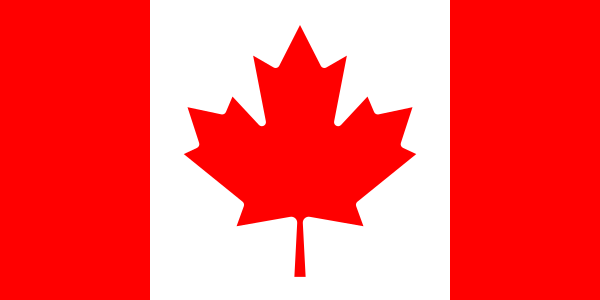Canadian Citizenship Practice Test Important Names
George Brown
George Brown was a Scottish-Canadian journalist, politician and one of the Fathers of Confederation; attended the Charlottetown and Quebec conferences. (Canadian Citizenship Practice Test)
Lord Durham
John George Lambton was appointed governor of Britain’s Canadian colonies in 1838, following much political unrest.
George-Étienne Cartier
Sir George-Étienne Cartier, 1st Baronet was a Canadian statesman and Father of Confederation
Robert Borden
Sir Robert Laird Borden was a Canadian lawyer and politician who served as the eighth prime minister of Canada, in office from 1911 to 1920. (Canadian Citizenship Practice Test)
John Buchan
John Buchan was popular Governor General of Canada (1935-1940) said immigrant should retain their individuality and each make its contribution to national character.
Gabriel Dumont
Gabriel Dumont was a Canadian political figure best known for being a prominent leader of the Métis people (Canadian Citizenship Practice Test)
Rick Hansen
Richard Marvin “Rick” Hansen is a Canadian track and field athlete, activist, and philanthropist for people with disabilities. Following a pickup truck accident at the age of 15, Hansen sustained a spinal cord injury and became a paraplegic. Hansen is most famous for his Man in Motion World Tour
Chris Hadfield
Chris Austin Hadfield is a Canadian retired astronaut, engineer, and former Royal Canadian Air Force fighter pilot. The first Canadian to walk in space, Hadfield has flown two Space Shuttle missions and served as commander of the International Space Station
John Buchan
John Buchan was popular Governor General of Canada (1935-1940) said immigrant should retain their individuality and each make its contribution to national character. (Canadian Citizenship Practice Test)
Gabriel Dumont
Gabriel Dumont was a Canadian political figure best known for being a prominent leader of the Métis people (Canadian Citizenship Practice Test)
The Famous Five
Emily Murphy (1868-1933), Nellie McClung (1873-1951), Irene Parlby (1868-1965), Louise McKinney (1868-1931) , and Henrietta Muir Edwards (1849-1931) were five female politicians and activists from Alberta who fought for women’s rights in various ways (Canadian Citizenship Practice Test)
Viola Desmond
Desmond was a businesswoman and part of Nova Scotia’s small black community. In 1946 she attempted to sit in a part of a movie theatre that was reserved for white customers and was arrested.
Louis Hippolyte LaFontaine
Sir Louis-Hippolyte Ménard dit La Fontaine, 1st Baronet, was a Canadian politician who served as the first Premier of the United Province of Canada and the first head of a responsible government in Canada
Agnes MacPhail
McPhail was an Ottawa schoolteacher who made history in 1921 by becoming the first woman ever elected to the Canadian House of Commons. (Canadian Citizenship Practice Test)
Chief Tecumseh
Canada’s most famous aboriginal leader, Tecumseh was head of the Shawnee Nation and a vital British ally during the War of 1812. (Canadian Citizenship Practice Test)
Sir James Douglas
The founding father of British Columbia, James Douglas was the powerful governor of Britain’s Pacific northwest colonies from around 1838 to 1864. (Canadian Citizenship Practice Test)
John Graves Simcoe
Sir John was the first governor of English-speaking Upper Canada, following the partition of Quebec into two colonies in 1792. At one time he was honoured as the founder of Ontario (Canadian Citizenship Practice Test)
Laura Secord
A young Canadian woman during the War of 1812, Secord overheard American officers planning their next attack while sitting in her father’s pub (Canadian Citizenship Practice Test)
Jacques Cartier
Cartier was a French explorer and the first European to make a substantial visit to what is now Canada. In 1534 he sailed into the Gulf of St. Lawrence, landing at modern-day Gaspé, Quebec. (Canadian Citizenship Practice Test)
Montcalm and Wolfe
The Marquis de Montcalm (1712-1759) and James Wolfe (1727-1759) were the French and English commanders during the Battle of the Plains of Abraham (1759) (Canadian Citizenship Practice Test)
Terry Fox
Terrance Stanley Fox was a Canadian athlete, humanitarian, and cancer research activist (Canadian Citizenship Practice Test)
Sir Samuel Leonard Tilley
He is believed to have suggested the name “Dominion of Canada” for the new country. He was a member of Sir John A. Macdonald’s (Canadian Citizenship Practice Test)
Sir Frederick Banting
Sir Frederick Grant Banting, co-discoverer of Insulin, a hormone to treat diabetes that has saved 16 million lives worldwide (Canadian Citizenship Practice Test)
Charles Best
Charles Herbert Best was an American-Canadian medical scientist and one of the co-discoverers of insulin. (Canadian Citizenship Practice Test)
Sir Wilfrid Laurier
Sir Henri Charles Wilfrid Laurier was a Canadian politician and statesman who served as the seventh prime minister of Canada, in office from 11 July 1896 to 6 October 1911 (Canadian Citizenship Practice Test)
Sir Arthur Currie
Sir Arthur Currie, the first and only Canadian to command the Canadian Corps during the First World War, was a pivotal figure in the nation’s war effort. Considered one of the finest generals of the war, Currie led the Canadian Corps to several important victories (Canadian Citizenship Practice Test)
Sam Steele
Sir Sam was a superintendent in the newly-formed Royal Canadian Mounted Police during the late 1800s. Tasked with managing police officers in the western Canadian territories, and later the Yukon, he became a celebrated figure of stern Canadian law and order. (Canadian Citizenship Practice Test)
John A. Macdonald
Sir John Alexander Macdonald was the first prime minister of Canada. The dominant figure of Canadian Confederation, he had a political career which spanned almost half a century (Canadian Citizenship Practice Test)
Samuel de Champlain
Called the “founder of Quebec,” Champlain was a French explorer and governor who oversaw and directed much of his country’s initial colonization of North America during the early 1600s. (Canadian Citizenship Practice Test)
Louis Riel
Riel was the founder and first leader of the western territory of Manitoba, which under his leadership became Canada’s fourth province in 1870 (Canadian Citizenship Practice Test)



